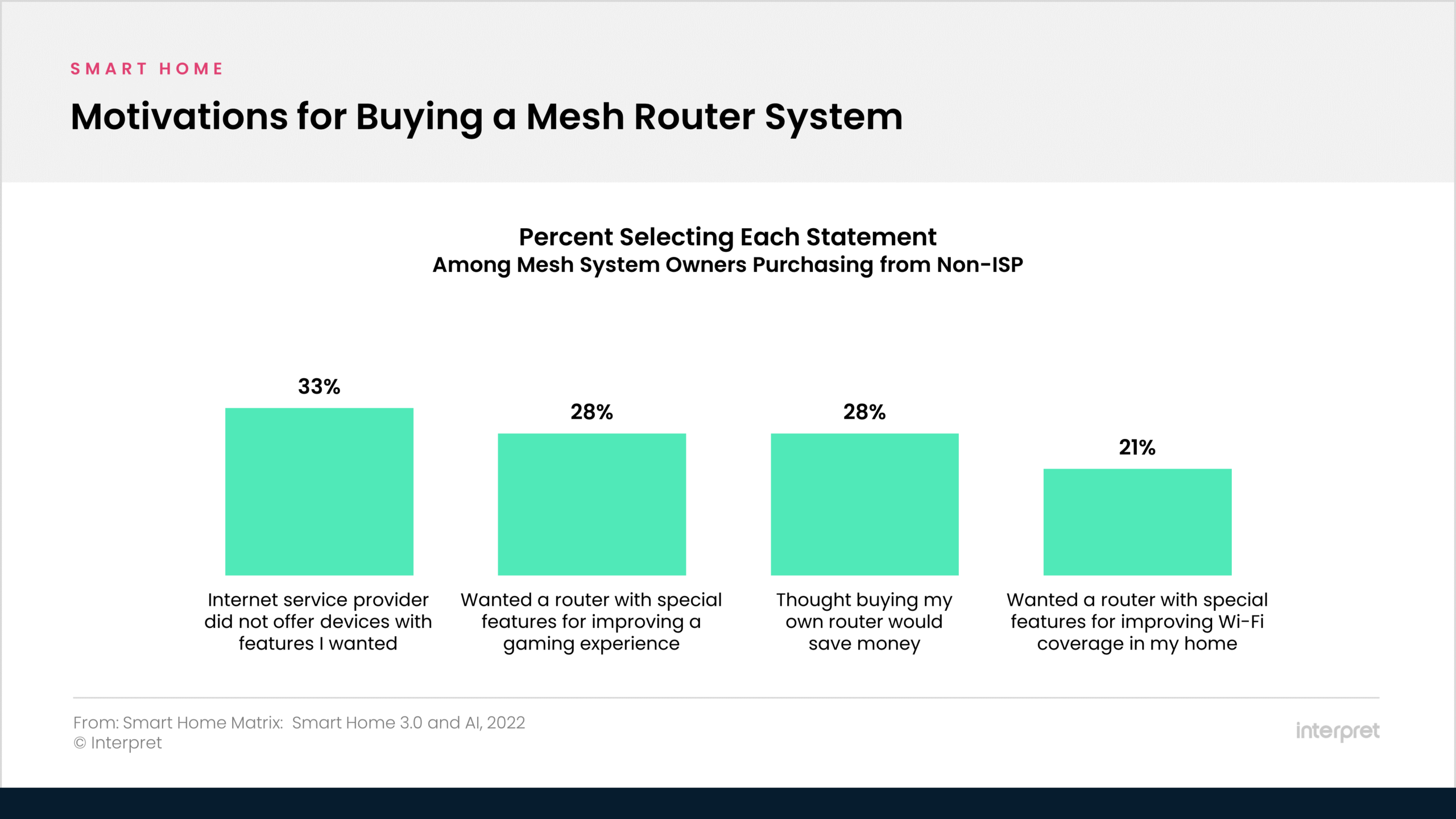When it comes to home networking equipment, it’s something of an 80/20 rule. 80% of US adults with broadband internet rely on customer premise equipment (CPE) provided by their internet service provider. Over 1 in 5 also add-on a mesh networking Wi-Fi system and 14% add-on a secondary router that is not a mesh networking system. When they do this, they typically relegate the CPE to passthrough mode ignoring any other features it offers.
Historically, CPE has been offered mostly as a one-size-fits-all solution which unsurprisingly has driven consumers into retail and other channels to find solutions for their networking needs. 1 in 3 mesh system owners indicate that the leading motivation for buying elsewhere is that their ISP does not offer devices with features they want. Some want special features for gaming and others want parental controls, enhanced data security, or better Wi-Fi coverage.
Google entered the home networking space in 2016 with the first generation of Google Wi-Fi, followed by the Nest Wi-Fi router in 2019. Along the way Google has consolidated its apps with all smart home devices and services, including Wi-Fi, running through the Google Home app. Recently, Google rolled out its latest iteration of networking hardware as the Nest Wi-Fi Pro mesh router.
Nest Wi-Fi Pro (MSRP $200 per unit or $400 per 3-pack) offer the latest tri-band features that can connect devices on the 2.4GHz, 5GHz, and 6Ghz bands, greatly reducing network congestion and enabling dedicated networks for defined tasks, such as video streaming or gaming. Each of the mesh units can function fully as a router with ethernet connections, unlike previous versions that acted as one primary router with extenders. However, since the new system uses Wi-Fi 6E as a wireless backhaul, it is not compatible with older models.
Another new feature leverages built-in Thread radios enabling the system to serve as a Thread border router for Matter-certified smart home devices, in the same way Thread-capable Eero routers from Amazon now function. Each router unit acts as part of a self-healing Thread mesh networking system for low-power devices, providing improved connectivity and reliability.
“This new Pro series raises the stakes on mesh networking systems at an affordable price for many households seeking a better Wi-Fi experience,” says Brad Russell, Interpret Vice President. “However, consumers sometimes mistakenly believe a mesh system is the remedy for their internet problems, when the best solution may be something else. Surprisingly, 51% of mesh systems are bought for homes smaller than 2,000 square feet, those less likely to need one.”
Learn more about consumer preferences around home networking trends in Interpret’s upcoming report Smart Home Matrix: Consumer – Home Networking.





